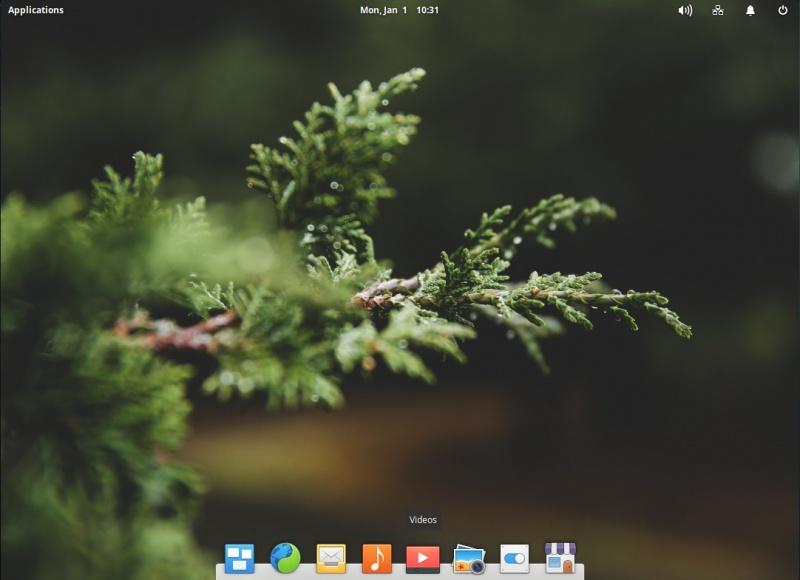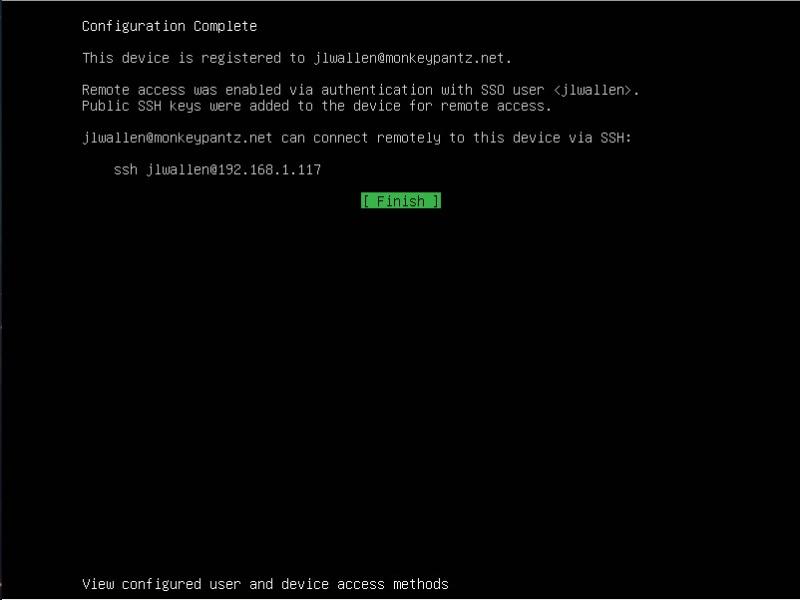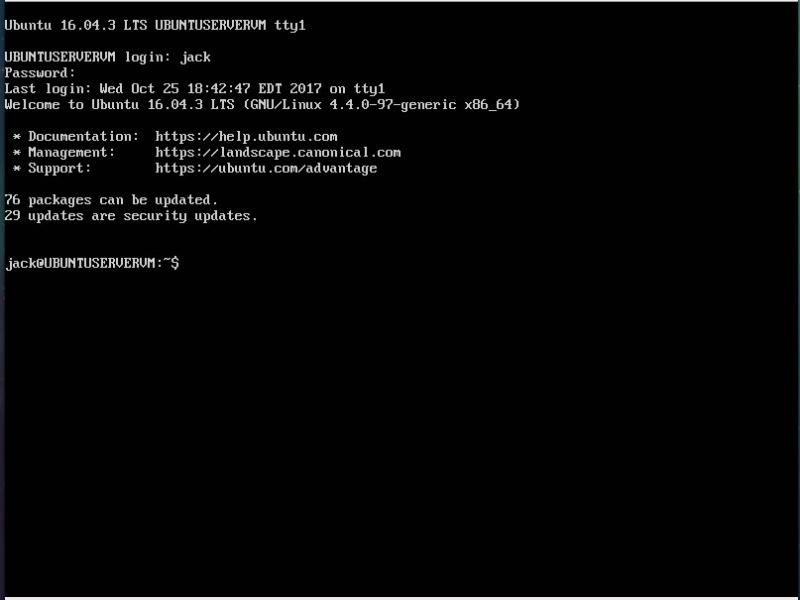Linux 2018: the most promising distributions
- Transfer
We present to your attention a translation of Jack Wallen's article from linux.com, which is dedicated to the most promising Linux distributions of 2018. About twelve months ago, we shared a similar review with you . What has changed over the year?
Jack says that in 2017 in the Linux world, one could observe trends regarding the increase in the number of distributions. This year, he expects increased ecosystem stability and increased Linux prevalence in both server computing and desktop PCs.
What to choose for someone who is going to switch to an open source platform this year, or someone who wants to change what they use to something new? If you go to Distrowatch

and look at the rating of distributions, the main thing that you can see there is an unimaginable scope of opportunities. The wealth of choice is good, but it means that choosing exactly what you need will not be easy.
So, which Linux distributions should you pay attention to this year? Jack has thoughts on this subject, and he wants to talk about them in this article. As in the past year, systems will be considered here, divided into several categories. Namely, we will talk about distributions for administrators, lightweight and desktop systems, Linux for professionals and for IoT, as well as server platforms.
Debian is rarely seen on the lists of the best distributions. Why? Given that Debian is the basis for Ubuntu (which, in turn, is the basis of many other distributions), it becomes clear that Debian, in fact, should be in the top positions of many ratings. And what does this distribution have to do with system administrators? I believe this is true for two important reasons:
Since Debian uses the dpkg and apt package managers, the system creates an environment in which it is very easy to work. In addition, Debian is one of the most stable Linux-based platforms. As a result, we have a distribution that is excellent for many environments and use cases. For example, here - servers and desktop computers, here - testing and software development. Although Debian does not include the number of applications that can be found in the distribution for administrators, noted in a similar last year’s review, Parrot Linux, in Debian it’s very easy to add everything you need. The good news is that anyone can install Debian using a suitable graphical environment (Cinnamon, GNOME, KDE, LXDE, Mate, or Xfce). As a result, by choosing Debian, anyone can be sure that the interface will fit their needs.

Debian 9.3 with the GNOME desktop
Debian is now in second place in the Distrowatch ranking. Download the distribution kit, install it, configure it according to your needs and enjoy stable and convenient operation. This system may look, in comparison with others, not so fashionable, but Debian is just the distribution that makes the dreams of system administrators a reality.
Lightweight distributions serve a very specific purpose - to give a second life to outdated, usually not the most powerful computers. But this does not mean that these distributions should be considered only in the calculation of old hardware. If your main goal is speed, a distribution from the category of lightweight will be very useful on a modern computer.
At the top of the list of lightweight distributions of 2018 is Lubuntu. Although there are plenty of options, only a few of them even come close to the ease of development characteristic of this distribution. Although Lubuntu's system requirements are not as modest as, say, Puppy Linux, we have a member of the Ubuntu family in front of us, and the convenience of working with it compensates for some “gluttony”. However, do not be afraid that the Lubuntu distribution will be too slow on a not very modern computer. However, the system requirements of Lubuntu are quite adequate. Namely, we are talking about a Pentium 4, Pentium M or AMD K8 processor, about 512 MB of memory for working with local applications, or about 1 GB for normal work on the Internet (Youtube, Google+, Google Drive, Facebook).
Lubuntu uses the LXDE desktop, which means that newcomers to Linux will not run into problems. Applications included in the distribution (such as Abiword, Gnumeric, Firefox) are characterized by high speed, convenience and simplicity.

Lubuntu and the LXDE desktop
For the second year in a row, Elementary OS tops my list of the best desktop distributions. For many, the leader of desktop systems is Linux Mint (and this is understandable). However, in my opinion, it's hard to beat the ease of use and stability of Elementary OS.
Confirmation of this is one story that happened to me. I was sure that the release of Ubuntu 17.10 would force me to return to Canonical distributions. Very soon after switching to a new Ubuntu with GNOME, I discovered that I lacked the convenience and reliability of Elementary OS. As a result, after two weeks with Ubuntu, I returned to Elementary OS.

The Panteon desktop in Elementary OS is a true work of art.
Anyone who tries Elementary OS immediately feels at home. The Panteon desktop is an example of an excellent combination of attention to detail, focus on user needs and convenience. At the same time, with each update, it only gets better.
Although Elementary OS ranks 6th in the Distrowatch ranking, I believe that this distribution will reach at least the third line by the end of this year.
Elementary developers know very well what users want. They listen to those who work on their OS and develop the system in the appropriate direction. However, Elementary OS is already in excellent condition. As a result, there is a feeling that developers can only make minor improvements to the system. Anyone who needs a desktop distribution that offers a well-designed interface will find it very difficult to find something that can beat Elementary OS. If you are looking for a system that has a remarkable level of reliability and ease of use, then Elementary OS was created specifically for you.
For a very, very long time, the Gentoo distribution was at the top of the list of distributions for those who are well versed in Linux and are not averse to show their knowledge and skills to others. However, I think it’s time for Gentoo to give first place to the true leader in the distribution category for professionals: Linux From Scratch. It may seem to you that this is not very honest, since LFS is not really a distribution, but a project that helps users create their own distributions. However, if you are serious about not showing all the difficulties, to show everyone how well you know Linux, what could be better than creating a distribution kit yourself? Thanks to the LFS project, you can create your system literally from scratch, assemble absolutely everything from the source code. So, if you really need it, download the LFS manual and start working on your own distribution.
For the second year in a row, the victory in this category goes to Ubuntu Core , I don’t see other options here. Ubuntu Core is a minimalistic, transactional version of Ubuntu designed specifically for use with embedded systems and in IoT projects. The reason that Ubuntu Core is so well suited for IoT is that the system pays special attention to snap packages - universal packages that can be installed without interfering with the base system. These packages contain everything that they need to work (including dependencies), as a result, while working with them, you don’t have to worry that installing them will violate something in the OS or in any other installed software. In addition, these packages are very easy to update and run in an isolated environment, making them a great solution for IoT.
Another security related feature of Ubuntu Core is its login mechanism. Ubuntu Core works with Ubuntu One ssh keys, and everything is organized in such a way that the only way to enter the system is to use an Ubuntu One account and ssh keys. This helps ensure a high level of security when working with IoT devices.

Ubuntu Core screen indicating that remote access is enabled for the Ubuntu One user
In this area, everything seems a bit confusing. The main thing in server distributions is support. If you need commercial support, then at first glance it is best to choose Red Hat Enterprise Linux . Over the years of its existence, Red Hat has proved that RHEL is not only one of the strongest corporate server platforms, but also the most profitable open source business in the world (with more than 2 billion annual revenue).
However, RHEL is far from the only server distribution. In fact, Red Hat is not even an absolute leader in enterprise server systems. If you look at the statistics on cloud installations only in Amazon Elastic Compute Cloud, here Ubuntu is far ahead of RHEL. According to Cloud Market, EC2 data indicates that RHEL has less than 100 thousand deployments, while Ubuntu has more than 200 thousand. This is a very serious result.
The result is that Ubuntu is the undisputed leader in the field of cloud servers. And if you add the simplicity of working with Ubuntu and containers here, it will become quite obvious that the Ubuntu Server distribution has won a landslide victory in the category of server systems. And if you need commercial support, Canonical can offer Ubuntu Advantage.
The only feature that Ubuntu Server might not like for someone is that by default this system uses only a text-based interface. If necessary, you can install a graphical shell here, but working with the Ubuntu Server command line is quite simple (perhaps this is one of the skills that every Linux administrator should have).

Ubuntu Server login screen containing information about available updates
As already mentioned, the list of promising distributions presented here is based on very subjective criteria. However, if you are interested in a certain area of activity, and you are looking for your first OS in this area, try the systems that were discussed. Each of them is designed for specific tasks, and each solves these problems much better than many others. Although you can question what we were talking about here, you will most likely not argue that everyone can find exactly what they need in the Linux world.
Dear readers! By tradition, we ask you to talk about what you are using and what you are using for, and which Linux distributions you could recommend to others.


and look at the rating of distributions, the main thing that you can see there is an unimaginable scope of opportunities. The wealth of choice is good, but it means that choosing exactly what you need will not be easy.
So, which Linux distributions should you pay attention to this year? Jack has thoughts on this subject, and he wants to talk about them in this article. As in the past year, systems will be considered here, divided into several categories. Namely, we will talk about distributions for administrators, lightweight and desktop systems, Linux for professionals and for IoT, as well as server platforms.
Best distribution for system administrators: Debian
Debian is rarely seen on the lists of the best distributions. Why? Given that Debian is the basis for Ubuntu (which, in turn, is the basis of many other distributions), it becomes clear that Debian, in fact, should be in the top positions of many ratings. And what does this distribution have to do with system administrators? I believe this is true for two important reasons:
- Ease of use.
- Extreme stability.
Since Debian uses the dpkg and apt package managers, the system creates an environment in which it is very easy to work. In addition, Debian is one of the most stable Linux-based platforms. As a result, we have a distribution that is excellent for many environments and use cases. For example, here - servers and desktop computers, here - testing and software development. Although Debian does not include the number of applications that can be found in the distribution for administrators, noted in a similar last year’s review, Parrot Linux, in Debian it’s very easy to add everything you need. The good news is that anyone can install Debian using a suitable graphical environment (Cinnamon, GNOME, KDE, LXDE, Mate, or Xfce). As a result, by choosing Debian, anyone can be sure that the interface will fit their needs.

Debian 9.3 with the GNOME desktop
Debian is now in second place in the Distrowatch ranking. Download the distribution kit, install it, configure it according to your needs and enjoy stable and convenient operation. This system may look, in comparison with others, not so fashionable, but Debian is just the distribution that makes the dreams of system administrators a reality.
Best Lightweight Distribution: Lubuntu
Lightweight distributions serve a very specific purpose - to give a second life to outdated, usually not the most powerful computers. But this does not mean that these distributions should be considered only in the calculation of old hardware. If your main goal is speed, a distribution from the category of lightweight will be very useful on a modern computer.
At the top of the list of lightweight distributions of 2018 is Lubuntu. Although there are plenty of options, only a few of them even come close to the ease of development characteristic of this distribution. Although Lubuntu's system requirements are not as modest as, say, Puppy Linux, we have a member of the Ubuntu family in front of us, and the convenience of working with it compensates for some “gluttony”. However, do not be afraid that the Lubuntu distribution will be too slow on a not very modern computer. However, the system requirements of Lubuntu are quite adequate. Namely, we are talking about a Pentium 4, Pentium M or AMD K8 processor, about 512 MB of memory for working with local applications, or about 1 GB for normal work on the Internet (Youtube, Google+, Google Drive, Facebook).
Lubuntu uses the LXDE desktop, which means that newcomers to Linux will not run into problems. Applications included in the distribution (such as Abiword, Gnumeric, Firefox) are characterized by high speed, convenience and simplicity.

Lubuntu and the LXDE desktop
Best desktop distribution: Elementary OS
For the second year in a row, Elementary OS tops my list of the best desktop distributions. For many, the leader of desktop systems is Linux Mint (and this is understandable). However, in my opinion, it's hard to beat the ease of use and stability of Elementary OS.
Confirmation of this is one story that happened to me. I was sure that the release of Ubuntu 17.10 would force me to return to Canonical distributions. Very soon after switching to a new Ubuntu with GNOME, I discovered that I lacked the convenience and reliability of Elementary OS. As a result, after two weeks with Ubuntu, I returned to Elementary OS.

The Panteon desktop in Elementary OS is a true work of art.
Anyone who tries Elementary OS immediately feels at home. The Panteon desktop is an example of an excellent combination of attention to detail, focus on user needs and convenience. At the same time, with each update, it only gets better.
Although Elementary OS ranks 6th in the Distrowatch ranking, I believe that this distribution will reach at least the third line by the end of this year.
Elementary developers know very well what users want. They listen to those who work on their OS and develop the system in the appropriate direction. However, Elementary OS is already in excellent condition. As a result, there is a feeling that developers can only make minor improvements to the system. Anyone who needs a desktop distribution that offers a well-designed interface will find it very difficult to find something that can beat Elementary OS. If you are looking for a system that has a remarkable level of reliability and ease of use, then Elementary OS was created specifically for you.
The best distro for those who know what's what: Linux From Scratch
For a very, very long time, the Gentoo distribution was at the top of the list of distributions for those who are well versed in Linux and are not averse to show their knowledge and skills to others. However, I think it’s time for Gentoo to give first place to the true leader in the distribution category for professionals: Linux From Scratch. It may seem to you that this is not very honest, since LFS is not really a distribution, but a project that helps users create their own distributions. However, if you are serious about not showing all the difficulties, to show everyone how well you know Linux, what could be better than creating a distribution kit yourself? Thanks to the LFS project, you can create your system literally from scratch, assemble absolutely everything from the source code. So, if you really need it, download the LFS manual and start working on your own distribution.
Best IoT distribution: Ubuntu Core
For the second year in a row, the victory in this category goes to Ubuntu Core , I don’t see other options here. Ubuntu Core is a minimalistic, transactional version of Ubuntu designed specifically for use with embedded systems and in IoT projects. The reason that Ubuntu Core is so well suited for IoT is that the system pays special attention to snap packages - universal packages that can be installed without interfering with the base system. These packages contain everything that they need to work (including dependencies), as a result, while working with them, you don’t have to worry that installing them will violate something in the OS or in any other installed software. In addition, these packages are very easy to update and run in an isolated environment, making them a great solution for IoT.
Another security related feature of Ubuntu Core is its login mechanism. Ubuntu Core works with Ubuntu One ssh keys, and everything is organized in such a way that the only way to enter the system is to use an Ubuntu One account and ssh keys. This helps ensure a high level of security when working with IoT devices.

Ubuntu Core screen indicating that remote access is enabled for the Ubuntu One user
Best Server Distribution: Ubuntu Server
In this area, everything seems a bit confusing. The main thing in server distributions is support. If you need commercial support, then at first glance it is best to choose Red Hat Enterprise Linux . Over the years of its existence, Red Hat has proved that RHEL is not only one of the strongest corporate server platforms, but also the most profitable open source business in the world (with more than 2 billion annual revenue).
However, RHEL is far from the only server distribution. In fact, Red Hat is not even an absolute leader in enterprise server systems. If you look at the statistics on cloud installations only in Amazon Elastic Compute Cloud, here Ubuntu is far ahead of RHEL. According to Cloud Market, EC2 data indicates that RHEL has less than 100 thousand deployments, while Ubuntu has more than 200 thousand. This is a very serious result.
The result is that Ubuntu is the undisputed leader in the field of cloud servers. And if you add the simplicity of working with Ubuntu and containers here, it will become quite obvious that the Ubuntu Server distribution has won a landslide victory in the category of server systems. And if you need commercial support, Canonical can offer Ubuntu Advantage.
The only feature that Ubuntu Server might not like for someone is that by default this system uses only a text-based interface. If necessary, you can install a graphical shell here, but working with the Ubuntu Server command line is quite simple (perhaps this is one of the skills that every Linux administrator should have).

Ubuntu Server login screen containing information about available updates
The choice is yours
As already mentioned, the list of promising distributions presented here is based on very subjective criteria. However, if you are interested in a certain area of activity, and you are looking for your first OS in this area, try the systems that were discussed. Each of them is designed for specific tasks, and each solves these problems much better than many others. Although you can question what we were talking about here, you will most likely not argue that everyone can find exactly what they need in the Linux world.
Dear readers! By tradition, we ask you to talk about what you are using and what you are using for, and which Linux distributions you could recommend to others.

